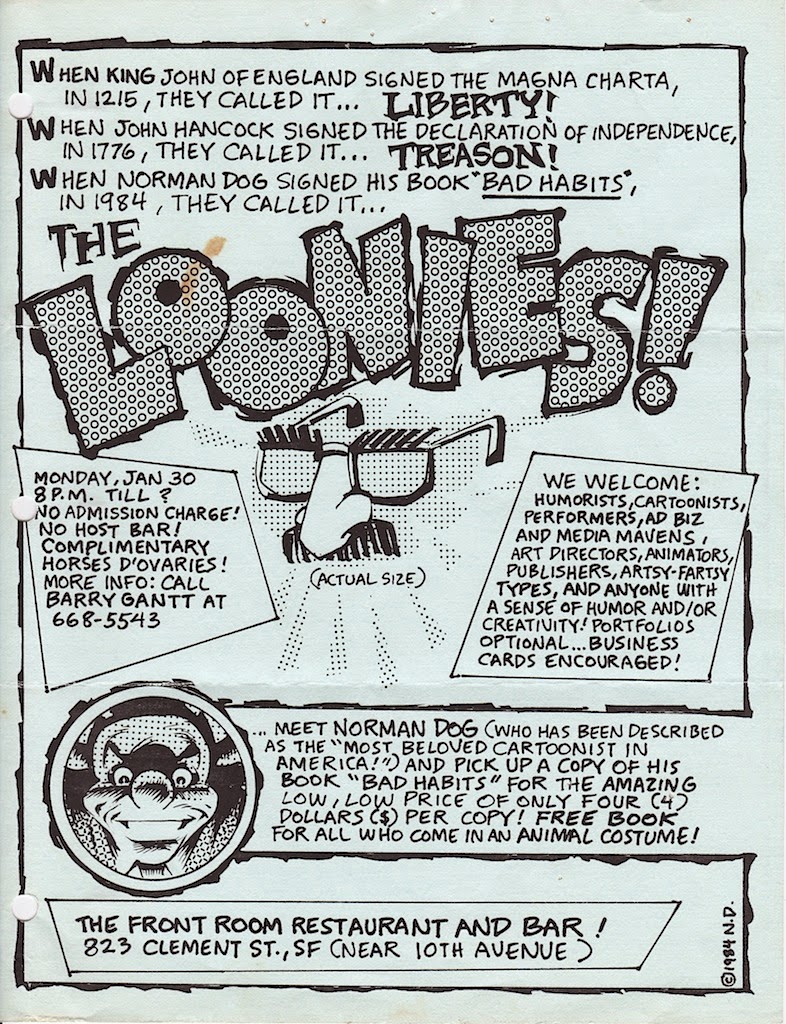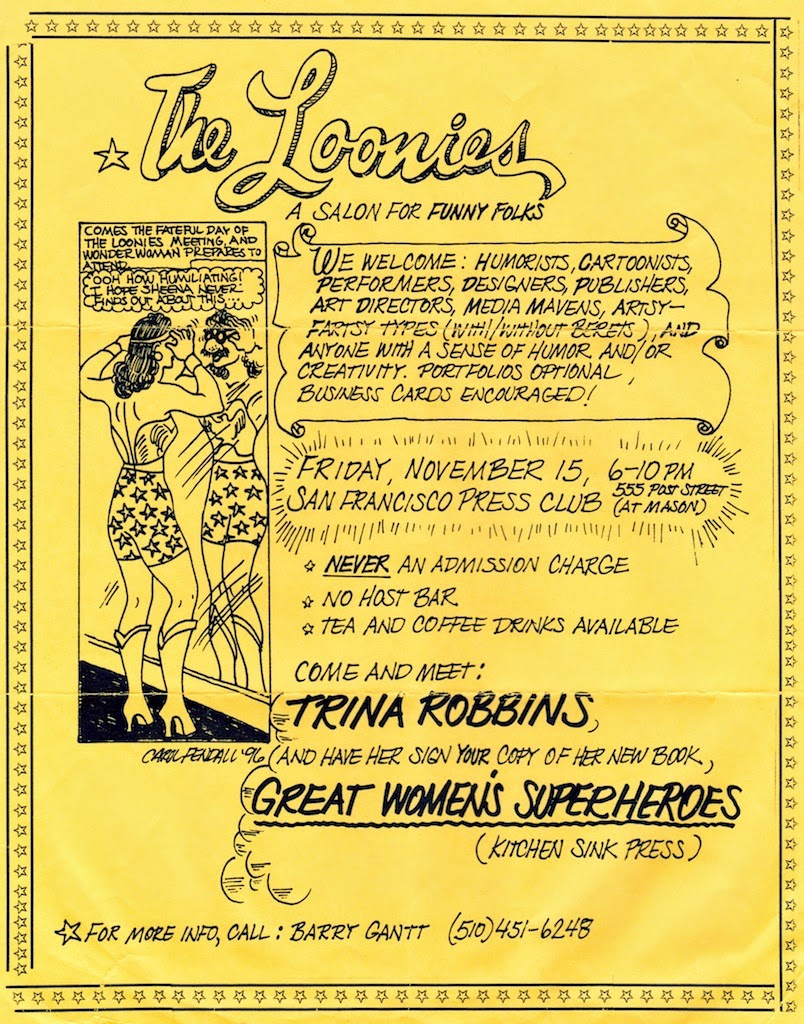In San Francisco back in the late 1970’s, Barry Gantt, a gag
writer and entrepreneur, organized a loosely knit group of cartoonists,
illustrators, gag writers and various media folk into what he described as a
Salon for Funny Folk—the Loonies
The Loonies met once a month at a bar, café, restaurant or
other venue somewhere in San Francisco.
The location changed quite a bit in the early years, from
Ben Johnson’s to Maggie’s Restaurant. I believe I recall attending many at
Ireland’s 32, Player’s Saloon, McLaren’s and the San Francisco Press Club. Each month there was a special guest. The
location and guest was announced by a mailed flyer drawn by a local cartoonist.
During the gatherings, many artists would bring their
portfolios. It was a great way to see people and make connections pre-Facebook (Heck, pre-internet).
 |
| The only photo I have from the olden days of the Loonies. The hirsute youngster is me, Roger May center, and Norman Dog. Circa late 1970's-early '80's. |
A small random listing of guests and attendees that I recall
includes Gahan Wilson, S. Clay Wilson, Dori Seda, Don Donahue, Michelle Ury,
T.O. Sylvester, Norman Dog, Steve Leialoha, Trina Robbins, Kathryn LeMieux, Lee Mars, Don
Gardner, Paul Mavrides, J. Michael Leonard, Leonard Rifas, Larry Gonick, Dan
O’Neill, Lee Binswanger, Alan Cumings, Kevin Brady, Michael T. Gilbert, Roger
May, Bob Nelson, Steve Smad, Marc Miyashiro, Guy Colwell, Melinda Gebbie, Tim Boxell, Michael McMillan, Terry
Boyce, Norman Quebedeau, Erkiki Alanen, Gilbert Shelton, Ron Turner, Bill Griffith and Phil Frank.
Offered here is a smattering of flyers spanning the 20+
years the Loonies ran. I have only a very few surviving samples. I keep thinking
someday Barry Gantt will write a little history on the Loonies but so far that
hasn’t happened.
A tip of the hat to Kevin Brady for supplying some of the flyers.
This one by Spain Rodriguez
I did the 2nd Anniversary flyer. Barry wanted a Pink Panther theme.
And here's the 10th Anniversary. This one seems to be a collage of various past flyers.
Larry "The Cartoon History of Pretty Much Everything" Gonick
The wild and wacky Norman Dog
The very talented Dan Hubig. Guest artist: Marty Links creator of the "Emmy Lou" comic panel.
The guest here is Michael McMillan. Flyer by Vecchio
I did this one in 1995. Guest artist: S. Clay Wilson
Mark Kingsley Brown
 |
| Featured guest Dana Crumb |
Drawn by Terry Boyce
Art by Rutherford. Guest J. C."Fusco Brothers" Duffy
Justin Green celebrating the reissue of his brillant "Binky Brown"
Cartoonist and Comic Art Herstorian, Trina Robbins
Art by Lourdes Duterte long-time staff artist for the SF Chronicle
Another one by the hyper clever Norman Dog.This one celebrating the 4th annual Loonies meeting.
And finally, the 20th Anniversary by Brian Crane creator of the Pickles comic strip.
Here's an Associated Press feature on the Loonies.
Barry Gantt is wearing the "Looney" glasses and nose.
Artwork copyrighted by respective artists













































